Online stores vs merchants: Who is to blame and what to do?
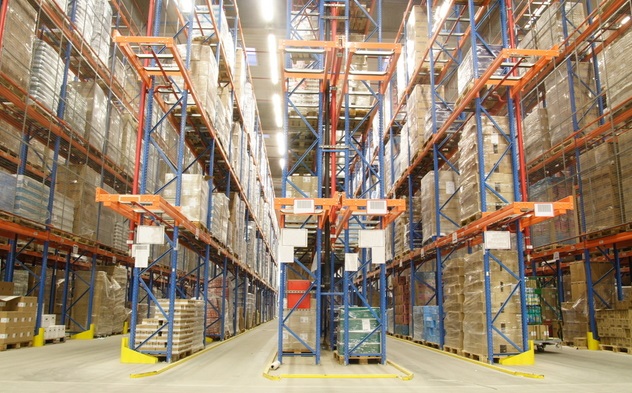
Anyone who is familiar with the e-commerce market from the inside knows that one of the most time-consuming tasks for all its participants is working with orders (receiving applications, reserving, etc.) that are left by potential buyers. The vast majority of online stores cannot afford to maintain their warehouse. It is believed that the drop shipment model solves this problem, in which the goods are sold immediately from the supplier’s warehouse, but not everything is so smooth here.
Houston, we have a problem
Nowadays, usability and UX, many stores pay special attention to their appearance - they optimize pages, test hypotheses, in general, do everything to increase sales.
But the costs of optimizing the site and even promotion can not be compared with the contents of its own warehouse. It would seem, so what, you can, after all, act as a showcase, take an order from a client, and transfer information about it further directly to the supplier, who will ship the conditional TV or refrigerator independently.
But, is this model convenient for the suppliers of goods? According to our study, there are three main difficulties a vendor has with online stores:
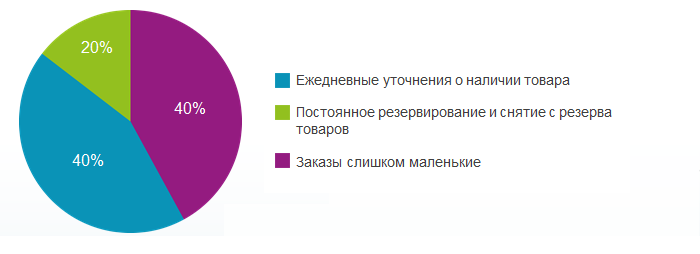
As a result, only a little more than a third of all possible suppliers work with the Internet - just imagine the abundance of goods on the shelves of virtual stores and the level of competition that could be:
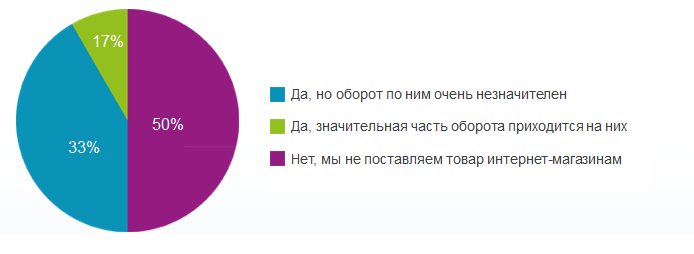
Why is this happening? In this situation, it is the suppliers who are guilty to a greater extent, many of whom, by their mentality and, accordingly, their technical level, are still in the deep 90s. Very often, during negotiations with a new supplier, representatives of online stores hear words such as “price in XLS”, “minimum lot - 50 thousand rubles”, “our site does not have a complete catalog, it’s better to call” and stuff like that.
The impact of situations where due to the fault of the insufficient technological level of the supplier, the actual status of the availability of goods cannot be shown on the site’s window, it is obvious that this entails a whole bunch of problems, starting from reputation losses, when a customer orders something that is not available, ending up useless a waste of advertising budgets on advertising currently missing goods.
Automating supplier interactions is quite difficult. Firstly, if the store is large enough, then it has several suppliers, and engaging in automation of communication with each of them is very difficult and expensive. With a probability of 100% automation will come down to the fact that suppliers will send an Excel file with balances for each product (each in its own format) to the store, which somehow needs to be parsed and uploaded to the admin panel.
This is an extremely time-consuming scheme, which, moreover, is due to the fact that the supplier will not always provide correct data on the balance, so the problem with advertising missing products will not be resolved.
What other options are there?
EDI Standards
Electronic Data Interchange or Electronic Data Interchange is a series of standards for the transmission of digital information. The main advantage of EDI for communications is the structure of information. Obviously, a situation is more profitable for a business when all participants in the business chain understand the processes that are happening, which is quite difficult to achieve when communicating by e-mail - the letter can always be interpreted incorrectly, etc. Many people would like to use EDI standards in the field of e-commerce.
The case of using EDI can be described as follows:
- Information about the order is stored in 1C, from where the necessary data can be extracted and converted into a file for the EDI translation program.
- The EDI translator checks the resulting file for compliance with the standards, after which the message itself is converted to the EDI format.
- Next, a communication connection is established for EDI transmission - the so-called purchase order.
- The file is sent to the mailbox either to FTP or directly to the recipient via HTTP.
- The program that receives the purchase order formats the incoming information and translates it into files of existing applications i.e. a purchase order via EDI can be converted and loaded into a special order registration module.
[More info here ].
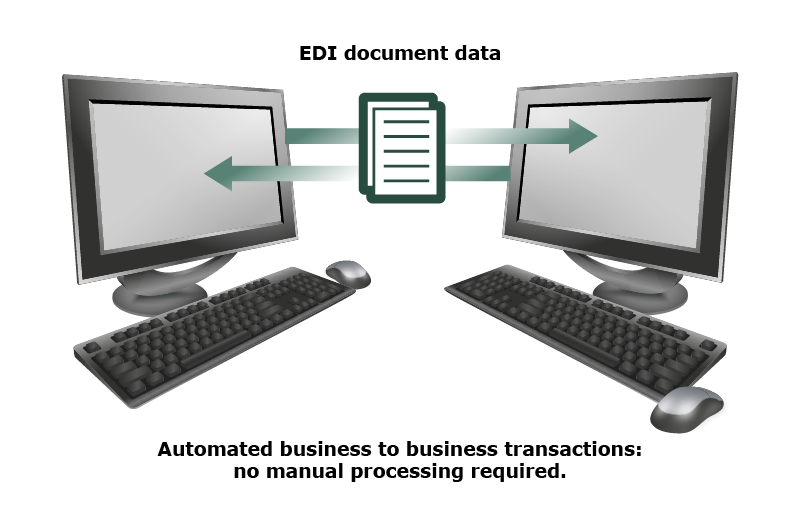
In total, the positive aspects of EDI:
- Increased accuracy of information.
- Possibility of reducing labor costs (e.g. manual entry).
- Speed - thanks to fast data transfer, time for negotiations with suppliers is reduced.
- Cost reduction.
- Save postage.
- Unnecessity of paper documents.
Unfortunately, the reality is that the likelihood that the existing form of EDI will work in electronic commerce is small. There are several reasons for this:
- Most players lack a systematization of data.
- There are no unique attributes of goods that could be used to sort and organize information.
- EDI does not transmit content data.
The question arises, if EDI is not suitable, then how to automate the communication of online stores with suppliers of goods and organize it?
B2B systems
To a part, not everything is so bad in the ecommerce market, because suppliers and online stores are not its only participants. There are special b2b digital distribution systems that help solve communication problems between suppliers and stores.
Such systems make it possible to reserve goods in warehouses via the Internet, see stock balances from 1C, generate various applications and work with documentation. The Internet distribution system works complete with a gateway for exchanging data between a b2b system and accounting databases like 1C.
Providers of Internet distribution systems connect suppliers that meet the necessary criteria (website, availability of certain brands, product matrix size, etc.) to a single database, and online stores receive a web interface and API for accessing data. The reservation process can also be automated, with the ability for online stores to automatically change the display of goods on the window, depending on the remains of the online store. Accordingly, suppliers on their website place a personal account for partners (i.e. online stores) who interact with the system through it.
Having a b2b system significantly reduces order processing time - with Agora Optima, from 17 minutes to 3 minutes. If the supplier has installed a similar system, he can receive through it up to 21% of all orders, however, at the moment, only about two percent of suppliers use b2b-systems.
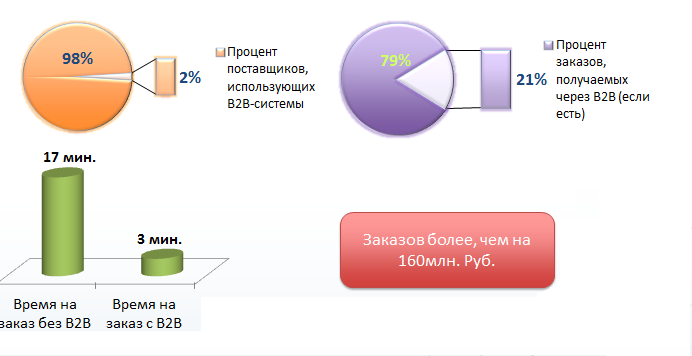
A separate advantage of such systems can be called their possible implementation as a designer, which can be “assembled” into a finished product using various modules. As a result, for most participants in the ecommerce market, such services can simplify interaction and reduce storage and advertising costs.
A little bit about the future
Obviously, the Russian e-commerce market expects another round of development, which will be characterized by the automation of data transfer, the emergence of high-load content transfer services, as well as the standardization of document transfer for e-commerce.
Standardizing the work of suppliers with online stores, if you want, the birth of the EDI 2.0 standard, will certainly create new opportunities for the growth of the e-commerce market.
